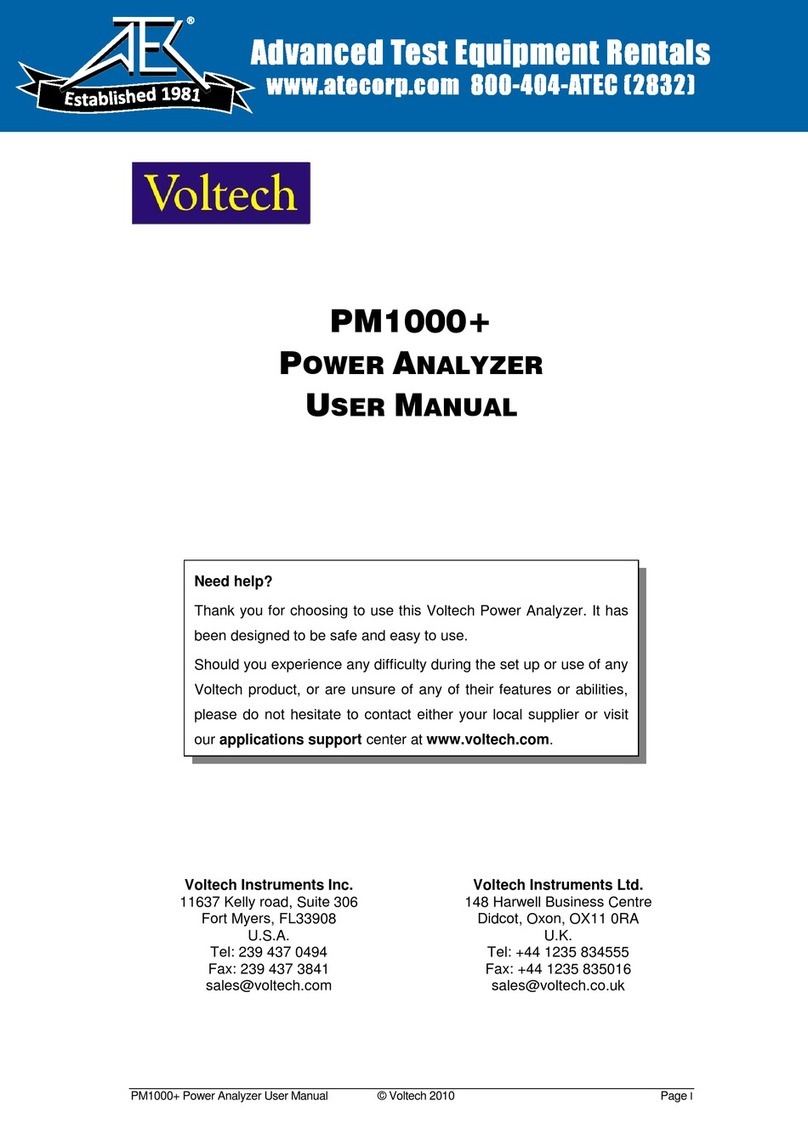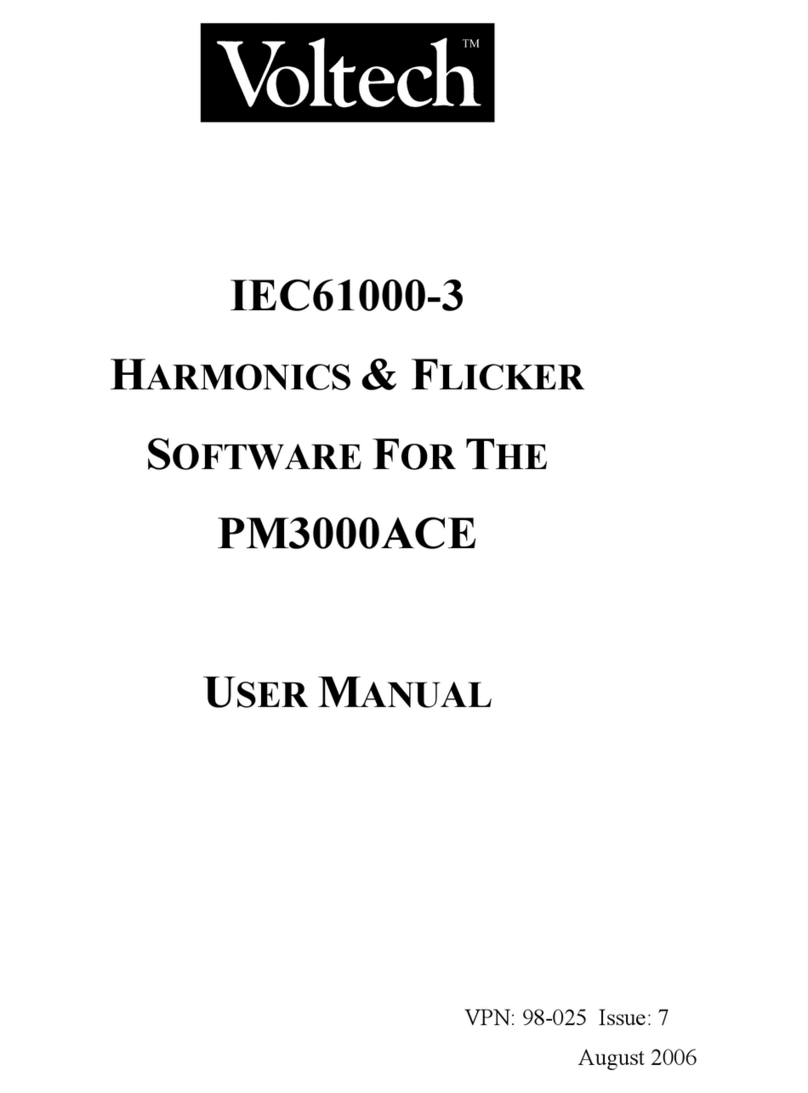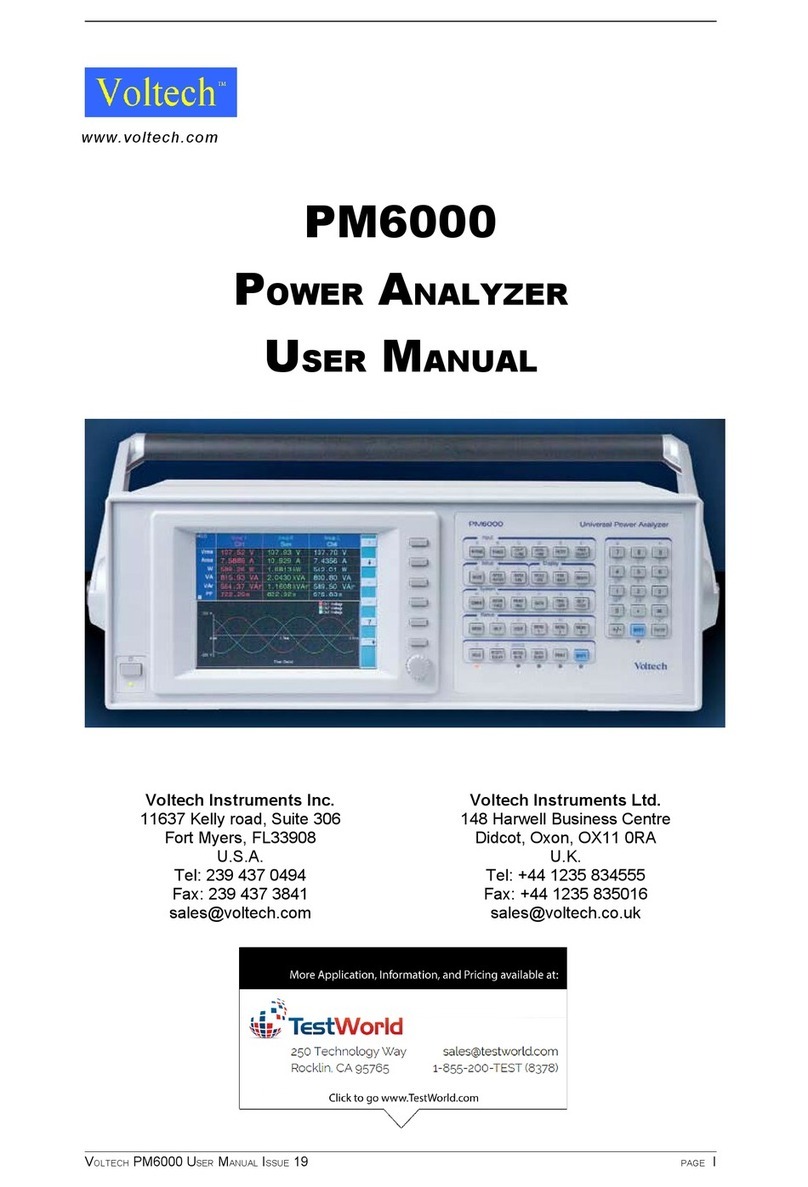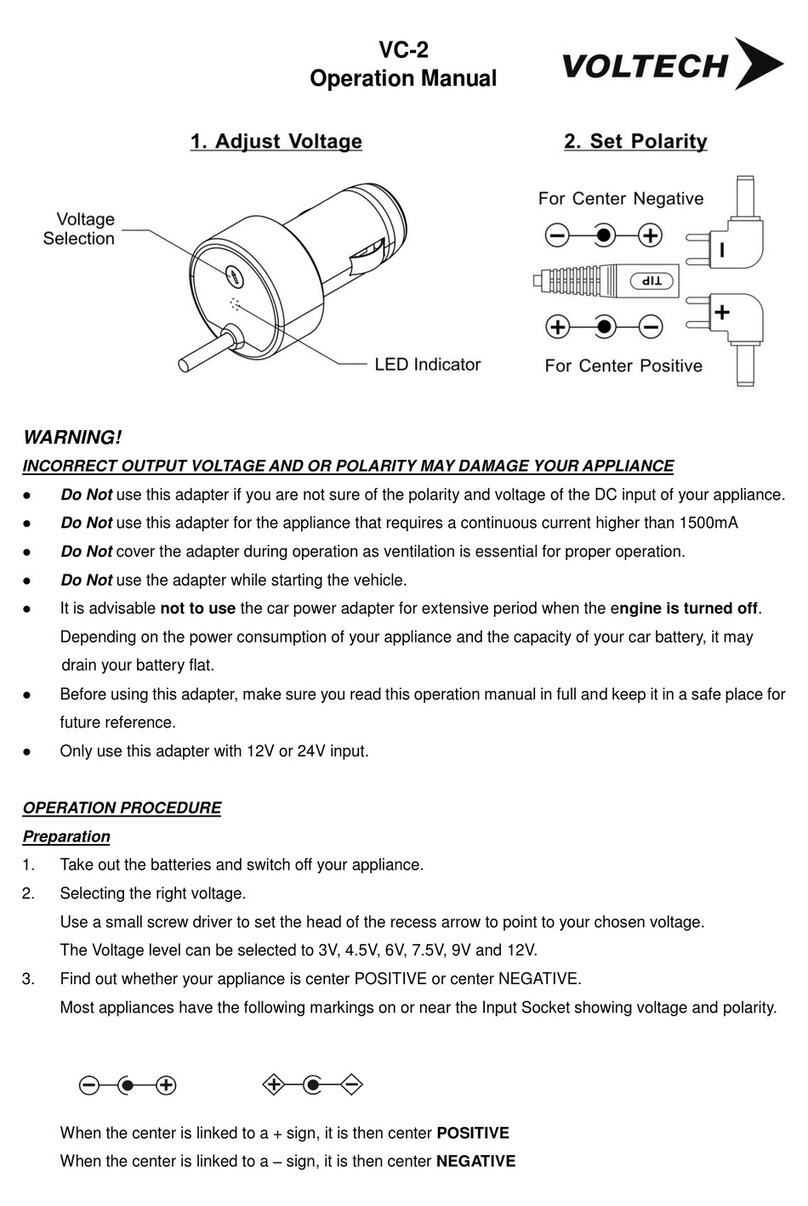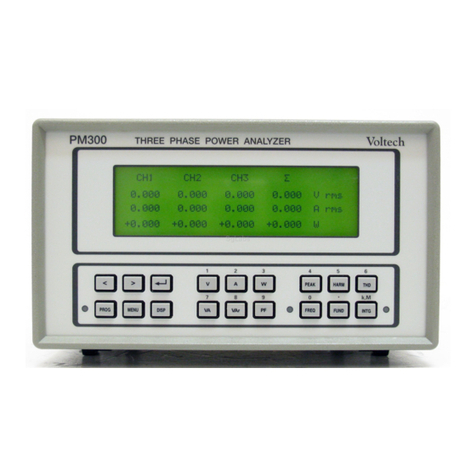
Page VI © Voltech 2007 PM1000+ Power Analyzer User Manual
Inrush Setup .................................................................................................. 4-2
Standby Power Setup .................................................................................... 4-3
Integrator Setup ............................................................................................. 4-3
4.6. Inputs.............................................................................................................. 4-3
Fixed/Auto Ranging ....................................................................................... 4-3
Scaling........................................................................................................... 4-3
Frequency Source.......................................................................................... 4-4
Shunts ........................................................................................................... 4-4
Blanking......................................................................................................... 4-4
4.7. Graphs............................................................................................................ 4-4
Waveform Graph............................................................................................ 4-5
Harmonic Bar Chart ....................................................................................... 4-5
Integration Graph ........................................................................................... 4-5
4.8. Interfaces........................................................................................................ 4-5
RS232 Baud Rate.......................................................................................... 4-5
GPIB Address ................................................................................................ 4-6
4.9. User Configuration. ......................................................................................... 4-6
4.10. System Configuration.................................................................................... 4-6
Auto Zero....................................................................................................... 4-6
Clock Setup ................................................................................................... 4-6
4.11. View.............................................................................................................. 4-7
Zoom ............................................................................................................. 4-7
Contrast ......................................................................................................... 4-7
5. Remote Operation .....................................................................................5-1
5.1. Overview......................................................................................................... 5-1
5.2. Command Listing............................................................................................ 5-1
5.3. Communications examples. ............................................................................ 5-5
Basic selection and returning of result............................................................ 5-5
Harmonics...................................................................................................... 5-6
Standby power ............................................................................................... 5-6
Inrush............................................................................................................. 5-7
6. Specification..............................................................................................6-1












